- someone
- Information for Middle and High School Researchers
- Research Tips
[Practice! Verification! Science] Natto (fermented soybeans) × robot hybrid for heavy oil recovery in the ocean!
2021.06.05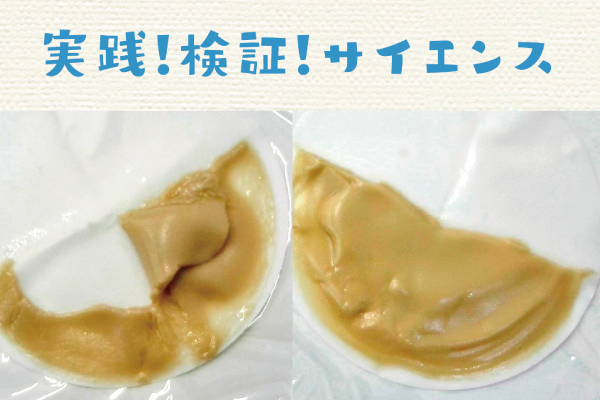
Here are practices from all over the country! Verification! from all over the country, with advice from researchers.
During the stranding of a cargo ship off the coast of Mauritius in July 2020, fuel oil leaked into the ocean, causing widespread oil pollution. One way to purify water contaminated by turbidity is to use a water purifier to solidify and remove the contaminants. The Robot Science Department, led by Mr. Kuratomi, wondered, "Wouldn't it be better to have a robot that could solidify and collect heavy oil by mixing it with water purification agents right on site, thereby reducing the damage?" They are working on the development of a recovery robot that can remove contaminants from water.
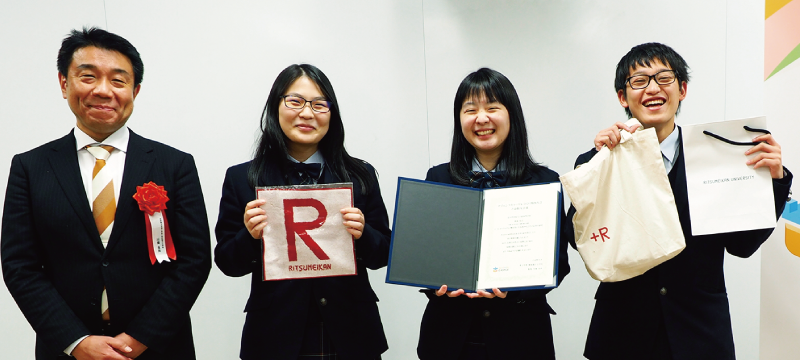
(This research received the Ritsumeikan University Prize at the Science Castle 2020 Kansai Conference.)
Experiment 1 Cooking Oil Recovery Experiments with Polyglutamic Acid
We experimented with a method of collecting oil floating on the surface of water with a water purifier. Sesame oil, which is easily available at home and easily treated afterward, was used instead of heavy oil. The water purifier was polyglutamic acid, a coagulant made from the sticky substance of natto (fermented soybeans). Since water purifiers are generally used for fresh water, we also conducted experiments with salt water of the same concentration as seawater, assuming that it would be used in the sea.
Experimental Materials and Equipment
- sesame oil
- Polyglutamic acid (Japan Polyglu Corporation PGα21Ca)
- Plastic bottle containers, beakers, pails, filter paper
experimental procedure
(1) Prepare 110 mL of experimental solution by mixing 100 mL of water or 100 mL of 3% brine with 10 mL of sesame oil.
Put ① experimental solution and 1.0 g of polyglutamic acid in a PET bottle and stir vigorously for 3 minutes.
(3) Filter the solution with filter paper.bypass (e.g. in vehicle engines)(after the -masu stem of a verb) to do
result
In both cases of water and brine, the sesame oil floating on the surface of the water became a fluffy mass (floc) and was removed by filtration. (Photo)
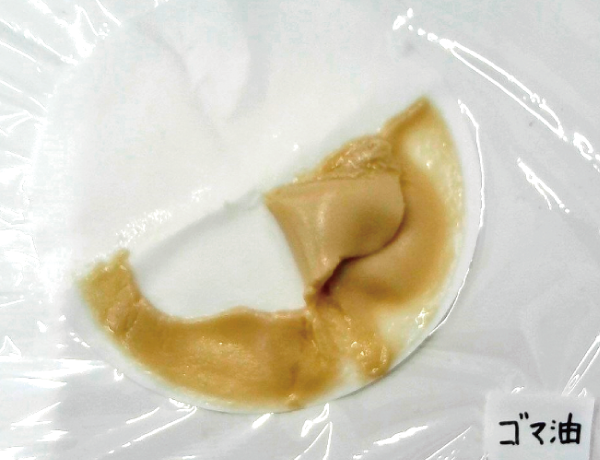
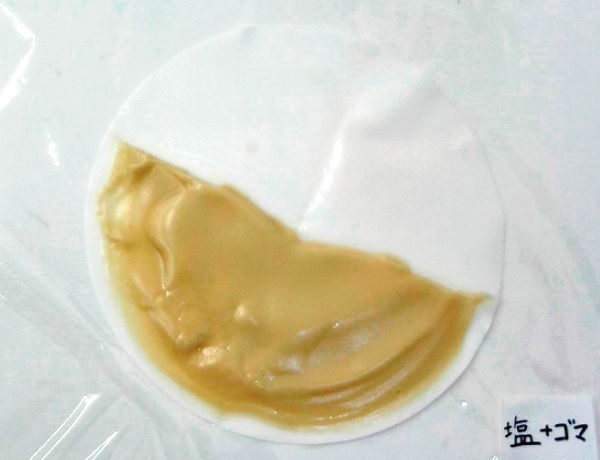
Polyglutamic acid and sesame oil flocs generated in the experiment (left: water, right: brine)
q What kinds of things can be used as water purifiers (coagulants)?
In general, the ions with more than one positive charge (Al3+Fe2+) and polymers with ionized functional groups are used. Water turbidity is generally negatively charged, and positively charged flocculants are used to attract the negatively charged flocculants and form flocs to solidify the contamination. Polymeric flocculants promote flocculation by entangling the flocs and making them larger.
Example: Poly aluminum chloride (PAC), aluminum sulfate, iron(II) chloride, etc.
Advice from Researchers
Your research covers a wide range of fields, including chemistry, machinery, and robotics, with an emphasis on environmental issues, and I think you have a very good point of view. Since garbage and other debris are mixed in with the actual oil spill, it may be helpful to investigate how only the oil components can be separated when the components attached to the garbage are included and what timing is suitable for the collection. For example, it would be good to accumulate data by observing the state of separation over time while changing the temperature and the amount of polyglutamic acid. Also, by referring to similar studies and recovery methods, a more efficient and practical device can be developed.
By creating a mini-model of the proposed recovery device and conducting experiments, we will be able to understand specific movements and obtain physical phenomena that we could not see before. I look forward to further results in the future.
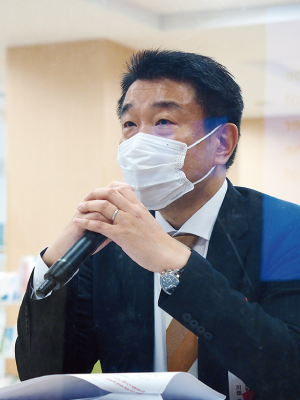
Experiment 2 Evaluation of oil recovery rate
In Experiment 1, we found that sesame oil can be recovered as flocs by polyglutamic acid. What percentage of the oil was recovered? The color of the original solution should become lighter as the oil is recovered. In the next experiment, we measured how much sesame oil was recovered by measuring the density of the original solution.
Experimental Materials and Equipment
- Chromaticity meter (HANNA Checker HI 727)
experimental procedure
Measure and compare the "chromaticity" of the solution before and after adding polyglutamic acid in Experiment 1.
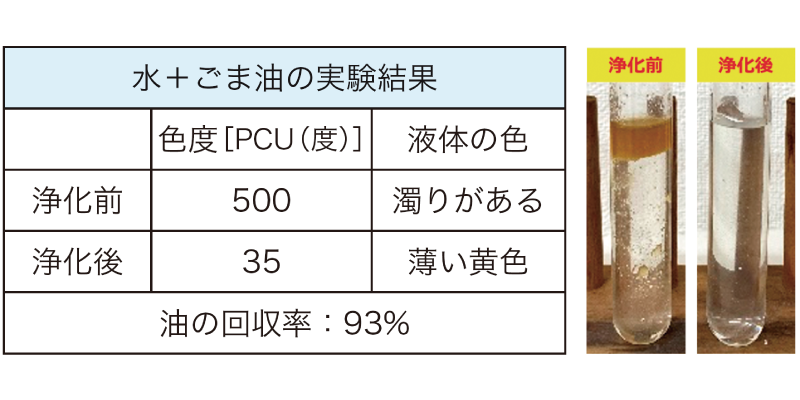
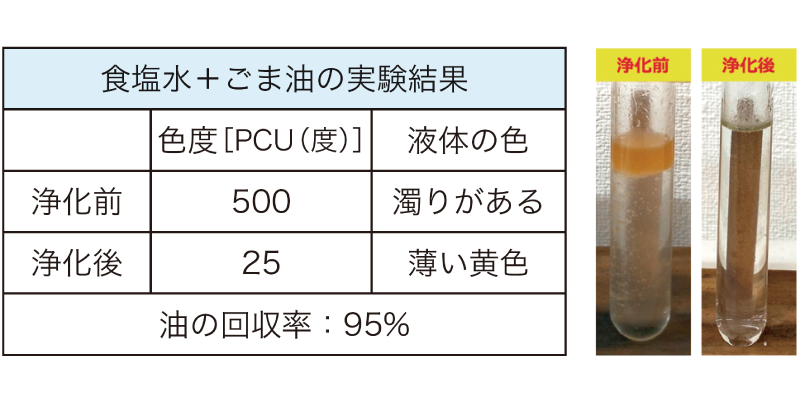
Future Research
In the future, we plan to conduct further research using oil that is more similar to heavy oil. At the same time, we will develop a robot that can be attached to vessels in the vicinity of the accident area and use its power to recover flocculated heavy oil.
▶ A waterwheel is attached to a ship and towed to turn the waterwheel. The rotation of the wheel causes seawater mixed with heavy oil to build up in the water tank, and at the same time, a purifier is fed into the tank and agitated. The flocculated heavy oil is collected by filtering.
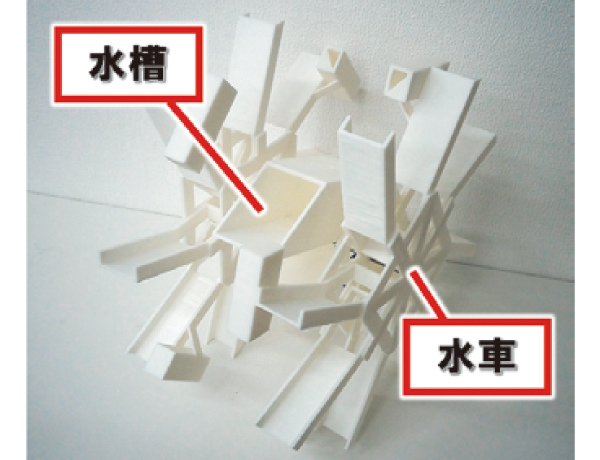
From "someone" Spring 2021 vol.54
